
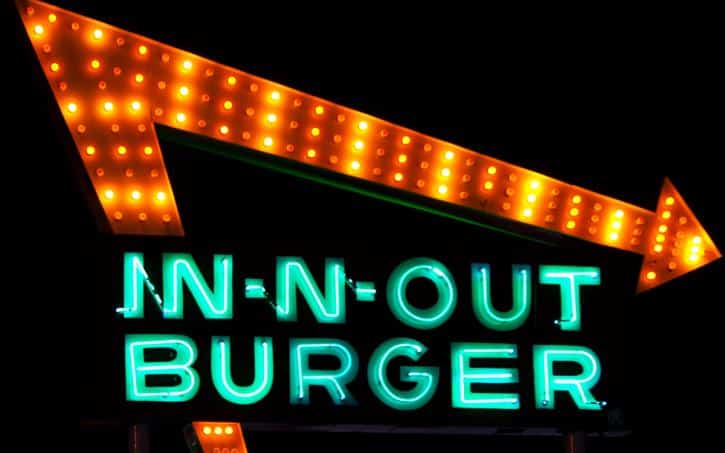
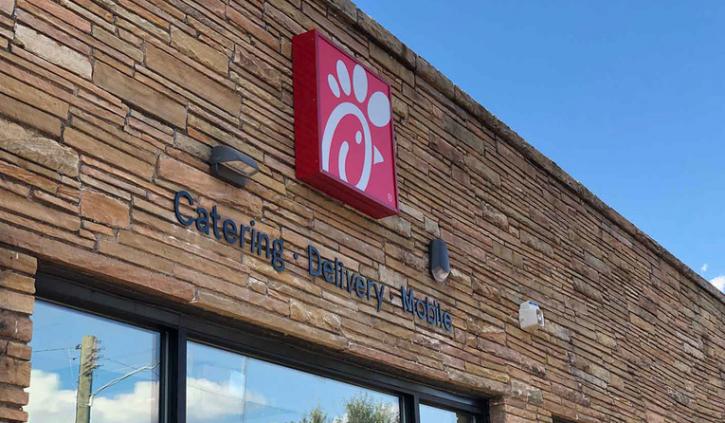
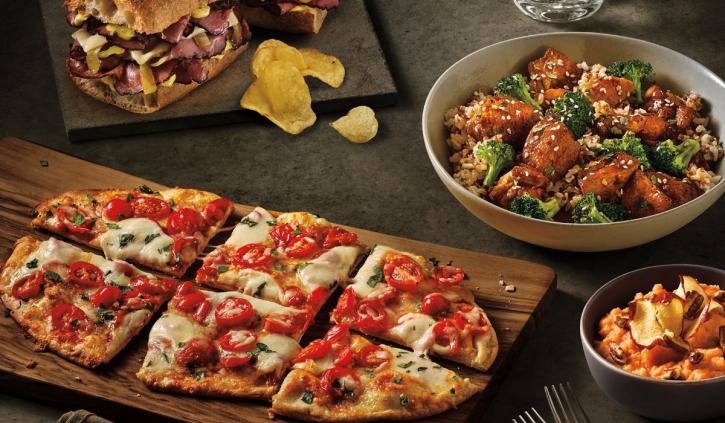
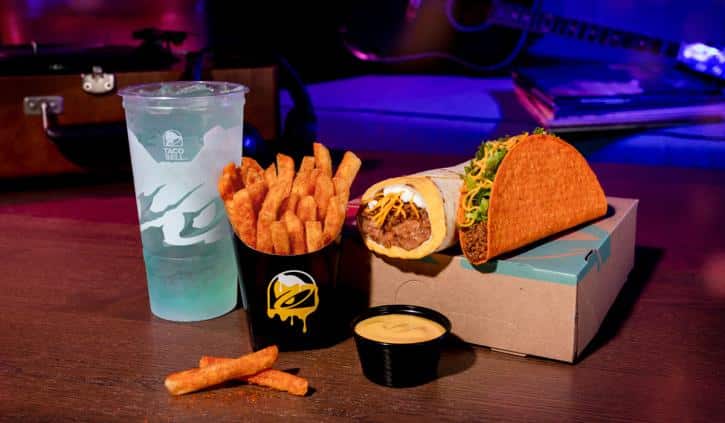
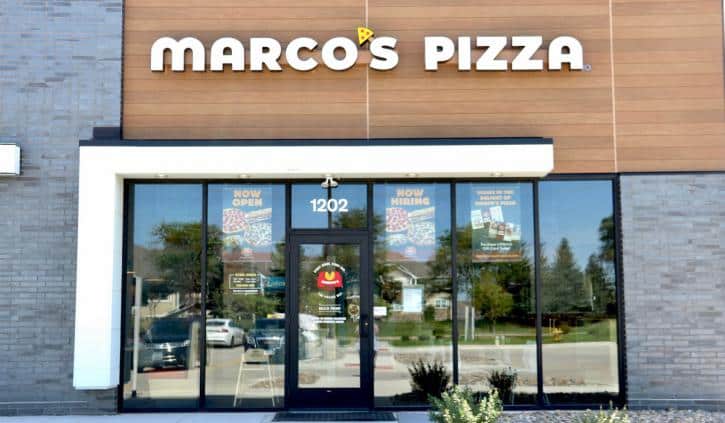
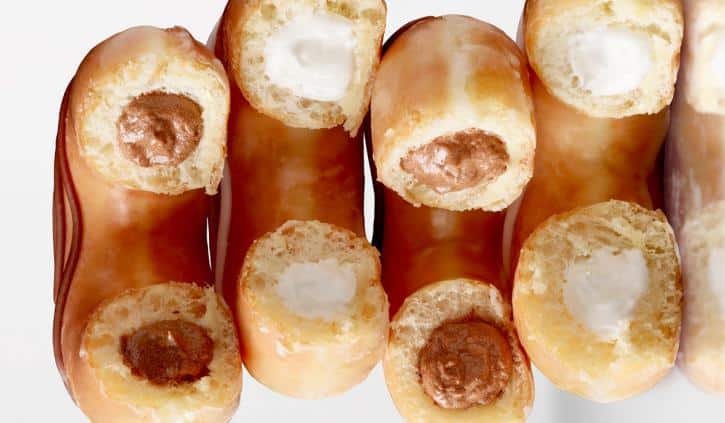
The speed of change
The quick-service restaurant industry gets tricky when it comes to measuring brand health. Sometimes a legacy chain needs to battle its own equity to remain relevant. You can’t just stick and expect to cash in. Unlike some other industries, innovation arrives swiftly and severely in foodservice. Classic restaurants find themselves staring down aging footprints and store layouts that don’t meet changing preference. And this spreads across thousands of units in markets around the country that all might need something different to succeed.
Burger King, McDonald’s, and Subway are perfect examples. They’re all mired in vast remodel programs intended not just to refresh and update venues to modern, contemporary looks, but also to push forward elements that satisfy onrushing trends. Subway, for instance, installed a fresh vegetable display case behind the sandwich line. The chain had sliced vegetables in-house for five decades and it never needed to sing the differentiator from the rooftops before. But today’s guests are far more conscious of ingredients, where they come from, and how this affects their dietary choices. And they don’t suspend reality when it comes to transparency.
What are some elements of Burger King’s restaurant of tomorrow design? There are double drive-thru lines, outdoor digital menuboards, in-store self-order kiosks. When asked about the changes, chairman Daniel Schwartz said earlier, “Outdoor digital menuboards drive increased check, allow for integration with other technologies, like mobile apps, and provide franchisees cost savings on printed menu and media signage.”
Those needs weren’t on the radar 15 years ago. Were they five years ago?
McDonald’s Experience of the Future restaurant is well documented by now—a massive undertaking that’s disrupted the entire system over the past year. But the fast-food leader knew the expense, and understood it was a necessary burden in its evolving lifecycle (4,500 restaurants alone in 2018 for nearly $1.5 billion, or 10 new restaurants each day). The kiosks, mobile pickup improvements, and ability to set up units to better serve future innovation, like the $300 million Dynamic Yield deal that positioned McDonald’s for a future of personalization. Recently the brand spoke about tech-driven kitchen changes, including automatic beverage equipment and voice-activated ordering.
All of these chains, beyond meeting tomorrow’s customer today, are looking at store designs as a way to approach labor and ease other industry headwinds, too. Yes, kiosks can cut down on labor dollars and satisfy guests who don’t want to talk to real people (this is increasingly common with younger consumers), but they also free up employees to work on soft skills, like teamwork. Additionally, tech can enable managers to focus on running restaurants instead of menial, administrative tasks. The infusion of ordering integration and digital back-of-the-house checklists (like food safety audits) are the future of multi-unit systems. It helps corporate peek into individual restaurants with real-time data in ways they never could before. It’s always been one of the biggest detractors for restaurants when it comes to spreading across new markets—the inability for a control center to oversee day-to-day business. Mobile technology is changing that. And it could rewrite how we look at restaurant growth in the future.
CHECK OUT THE FULL-SERVICE RESTAURANT RANKINGS
The Harris Poll has conducted one of the longest-running brand studies in the business. The 31st edition of the EquiTrend Brand Equity Index comprised of three factors—familiarity, quality, and purchase consideration. More than 45,000 U.S. consumers were polled this year across 196 categories. John Gerzema, CEO of The Harris Poll, said there was a common thread across the winners: consumer devotion and respect for—and expectation of—performance.
“These are brands Americans especially love and expect great things from in the future,” he said.
Here’s where the top quick-service players stacked up:
Burgers
1. In-N-Out Burger
2. Wendy’s
3. Five Guys Burgers and Fries
4. Whataburger
5. Culver’s
6. McDonald’s
7. Burger King
8. Shake Shack
Brands ranked below the category average in alphabetical order: Carl’s Jr., Checkers/Rally’s, Hardee’s, Jack in the Box, Smashburger, Sonic Drive-In, Steak ‘n Shake, White Castle.
Last year’s winner: Five Guys
There are always ways to connect customer perception to success. Here’s one for In-N-Out Burger: Glassdoor recently named CEO Lynsi Snyder the No. 3 executive in the country (employee rankings). That’s not restaurants, but all businesses. She was the No. 1 food CEO on the list and the top woman as well. When you consider all the labor challenges opeators face and the generalization tied to working in a restaurant, the fact Synder was rated this high by employees is really a remarkable achievement. You simply don’t sustain a cult-classic brand of this magnitude without a culture driven from the top down.
Wendy’s coming in at No. 2 is worth a call-out as well. Has the burger chain’s snarky efforts via social media to talk to millennials paid off? It appears so. Here’s a look at how Wendy’s is striking an effective menu balance with recent promotions.
Chicken
1. Chick-fil-A
2. Raising Cane’s Chicken Fingers
3. Popeyes Louisiana Kitchen
4. Zaxby’s
Brands ranked below the category average in alphabetical order: Bojangles’, Boston Market, Church’s Chicken, El Pollo Loco, KFC, Wingstop.
Last year’s winner: Chick-fil-A
Again, zero surprise here. Chick-fil-A leads with culture and the results reflect that. The brand has always preached people over process. But it doesn’t hurt its operations are among the best quick service has seen. Just check out the chain’s QSR Drive-Thru Study rankings across the board. Sure, it’s great to be friendly and courteous. But Chick-fil-A anchors that with quality food and execution that’s as consistent as it gets.
Raising Cane’s CEO Todd Graves also cracked that Glassdoor list at No. 28. He was the second restaurant leader to earn a spot behind Snyder.
Wingstop is a brand to keep an eye on in that next tier. The chain’s growth, even at 1,273 global locations, has a lot of runway. And Wingstop is well equipped to capitalize on some of these digital innovations, especially delivery. Its domestic same-store sales hiked 7.1 percent in the first quarter, marking 16 consecutive periods of gains. And it followed a lift of 9.5 percent in the comparable Q1 2018 period. Digital surpassed 30 percent of total sales last quarter as well, and the brand is really just now testing new systems, like payment kiosk and QR-coded pick-up lockers. As always in this business, throughput equals more transactions when the traffic is steady.
Sandwich shops
1. Panera Bread
2. Subway
3. Firehouse Subs
4. Jersey Mike’s Subs
5. Potbelly Sandwich Shop
6. McAlister’s Deli
7. Jason’s Deli
Brands ranked below the category average in alphabetical order: Arby’s, Blimpie, Corner Bakery Café, Jimmy John’s, Quiznos.
Last year’s winner: Panera and Subway (tie)
Panera is probably best defined by a broader definition (café maybe), which you’re seeing unfold lately with some of its menu initiatives. It’s pushing further into breakfast in an effort to grab share and loyalty, and testing a dinner menu. Seventy-five percent of Panera’s business takes place post-11 a.m. Dinner accounts for roughly a quarter to a third of sales. The new breakfast strategy includes wraps, expanded bakery items, and coffee grinded in-house. The dinner menu focuses on hearty items and family options. One thing about Panera is that it has the tech tools to place to fight for customers at-home as well as in-store. Breakfast delivery, fueled by its own fleet, comes to mind.
Subway ranking second is a good sign for the brand as it retracts units and refreshes stores. That’s really been the story over the past two years—relocations, remodels, and cutting underperformers (about a 1,000 last year). Lately, though, Subway’s turnaround has been defined by menu innovation as much as footprint. That’s a shift from year’s past. The deal with Tastemade is definitely an intriguing one. So is the brand’s move to try new breads, like King’s Hawaiian and now Ciabatta. That’s a platform to innovate off for all sandwich chains.
Mexican
1. Taco Bell
2. Moe’s Southwest Grill
3. Qdoba Mexican Grill
Brands ranked below the category average in alphabetical order: Baja Fresh Mexican Grill, Chipotle Mexican Grill, Del Taco.
Last year’s winner: Taco Bell
Taco Bell held steady atop the rankings, ending a three-year carousel. Chipotle enjoyed the title in 2016 and Moe’s won in 2017. Taco Bell took over last year and kept ahead of the pack in 2019. According to this study, Chipotle still has some ground to gain in regards to customer sentiment. That’s a relatively scary proposition given how strong its sales trends have been lately, pushing comps up nearly 10 percent last quarter.
It can’t be understated, though, how much progress Taco Bell has made in the last five, 10 years with becoming a lifestyle brand. That’s a term tossed around a lot in quick service, but nobody does it better. Who else would host a pop-up hotel with hot sauce floaties? The image, commercials, and message have worked nicely with an industry-leading menu innovation team. The chain’s vegetarian menu test has national plans. It launched a new value architecture to start the year focused on tiers instead of just the $1 price point. Like always, it’s always guided by the ability to continue adding new news into segments and promote products that don’t stress the bottom line. Few brands are as masterful at taking the same ingredients and promoting them differently than Taco Bell. The chain also has delivery live in more than 4,000 U.S. stores and has big international growth plans. Unlike other YUM! Brands restaurants (KFC and Pizza Hut), Taco Bell is domestic heavy with 6,611 of its 7,105 locations stateside. For perspective, of KFC’s 22,886 locations, 18,824 are outside the U.S. For Pizza Hut, it’s 10,993 stores out of 18,466. Taco Bell, which had same-store sales growth of 4 percent in the first quarter, including 5 percent in the U.S., recently signed a 600-unit deal for India. This past year, Taco Bell’s franchisees committed to more than 1,100 international units under development agreements.
So this battle for supremacy in the Mexican category could just be heating up.
Pizza
1. Marco’s Pizza
2. Blaze Pizza
3. Domino’s Pizza
4. Pizza Hut
5. Papa Murphy’s
Brands ranked below the category average in alphabetical order: CiCi’s Pizza, Little Caesars Pizza, Papa John’s Pizza, Round Table Pizza.
Last year’s winner: Blaze
Marco’s took a quantum leap in this year’s study, raising its brand equity score 10 percent. It also earned the titles of Most Loved and Most Trusted Pizza Restaurant Brand among consumers. The chain is not a newcomer by any means, founded in 1978 by Italian-born Pat Giammarco in Toledo, Ohio. But its growth story is. The 900-plus unit chain said it plans to hit 1,000 stores this summer and could reach 1,500 by the end of 2020. That would represent growth of roughly a restaurant every three or four days. It’s a quick march. When current CEO Jack Butorac came on board as a consultant in 2004, Marco’s had 126 stores across three states and was the 26th largest pizza chain in the U.S. Last year, it opened 95 restaurants and had 911 total as of January 21. It’s jumped 20 spots in the pizza rankings. The 2019 target would double that yearly growth.
COO Tony Libardi said in a statement of the Harris Poll win: “With our continued commitment to our founder Pasquale Giammarco’s original recipe and focus on quality, Marco’s Pizza has stayed true to its Italian roots since 1978 and we are thrilled Americans confirmed its their favorite pizza restaurant brand.”
Blaze is another growth machine right now. The chain, created in 2012 by Elise and Rick Wetzel—cofounders of Wetzel’s Pretzels—already has more than 300 locations and expects 500 by 2021.
Coffee shops
1. Dunkin’ Donuts and Krispy Kreme (tie)
2. Starbucks
Brands ranked below the category average in alphabetical order: Caribou Coffee Shops, Dutch Bros. Coffee, Peet’s Coffee Shops, Seattle’s Best Coffee Shops, The Coffee Bean & Tea Leaf, Tim Hortons.
Last year’s winner: Krispy Kreme
Krispy Kreme is set to open a flagship location in NYC’s Times Square. Planned for early 2020, the chain expects it to serve more guests annually than any other location in the world. The 4,500-square-foot unit will include a doughnut theater experience with stadium-style seating and a massive “Hot Light” to alert customers of fresh orders. The venue will also feature an exterior walk-up window and interior grab-and-go counter. It should be interesting, to say the least.
Dunkin’ at the top is a sign of the chain’s fervent following. This coming years, however, will be transformational as the brand expands beyond the markets where there seems to be a store every 50 feet. Dunkin’ is planning to open 1,000 net new units in the next three years—90 percent of which will be located outside of its core areas. Like aforementioned chains, Dunkin’s NextGen design is fully equipped for a digital future. And its espresso launch helped the brand dive into a category it long ceded to rivals. This past quarter, Dunkin’ posted 2.4 percent same-store sales growth in the U.S.—its largest quarterly increase in four years. The espresso category has grown 30 percent since last year’s relaunch. Dunkin’ also made headlines in June when it announced it was testing delivery at 400 NYC locations, with more to come.





